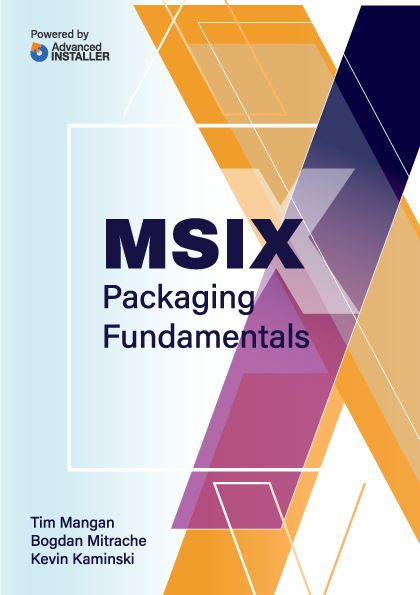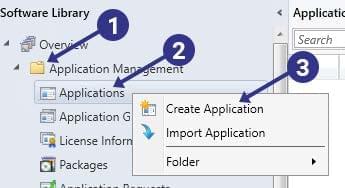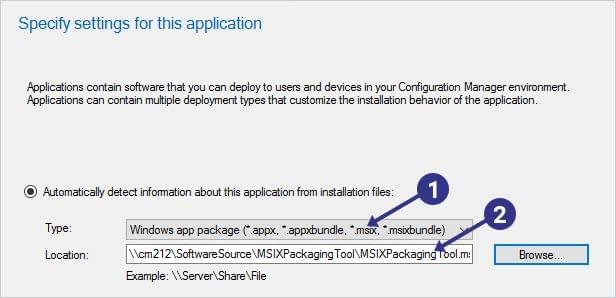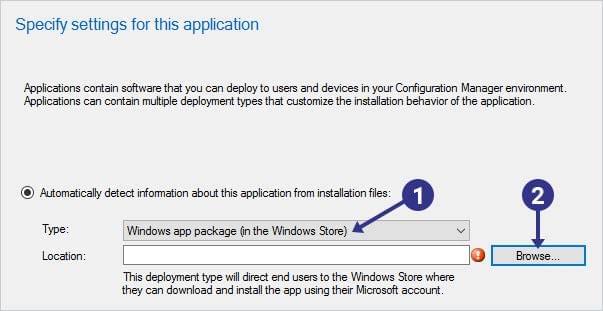Contents
- Overview
- Deployment File Types for MSIX
- MSIX Package Installations
- Upgrades and Downgrades
- Per User Installations
- Standard User Installation
- Application Package Signing
- Using the App Installer App
- Installing App Installer App
- Application Management via App Installer App
- App Installer App from Web Sites
- Uninstall an MSIX Package using App Installer App
- Installing MSIX with PowerShell
- The Add-AppXPackage Cmdlet
- The Get-AppXPackage Cmdlet
- The Remove-AppXPackage Cmdlet
- Using Get-AppPackageManifest
- Deployment with DISM
- Offline & Online Installation
- Provisioning Packages
- MSIX and the Windows Store
- MSIX and the App Installer File
- Configuration Manager and MSIX Deployment
- Using Intune with MSIX
- VDI Meets MSIX with App Attach
- MSIX and App Center

Configuration Manager and MSIX Deployment
Configuration Manager has a long and distinguished history of managing Windows devices with application management as one of its many capabilities.
For sure, many of you are aware that managing applications on Windows 10 devices comes in different forms. Configuration Manager on its own provides multiple ways to install MSIX applications on a device, and it is important to point out that there are also cloud-based MSIX application management options that you can explore.
When Configuration Manager is in a hybrid-cloud configuration, known as co-management, it is possible to have Intune handle MSIX applications on the same device.
This section focuses exclusively on distributing MSIX packages with Configuration Manager and its underlying infrastructure. There are two main paths you can follow to publish an MSIX package through Configuration Manager.
However, whichever path you choose depends on how the application source is acquired. This is because with MSIX, if the application is in the Windows Store, then it makes sense to use that solution with Configuration Manager. Otherwise you might have a bunch of application source files that need to be loaded directly into the Configuration Manager.
With that caveat out of the way, the first way to distribute an MSIX package assumes that you have an offline copy of the application that can be loaded into the Configuration Manager for distribution.
While using Windows Store is the preferred method for handling the distribution of modern applications, there are times (e.g., distributing internally repackaged software) when the store model isn’t suitable because it is more rigid and that can add significant delays to the publishing process.
Having the MSIX package file offers more control over the delivery of MSIX applications, but considering the following.
Paid apps from the store are not supported for offline installation via Configuration Manager. For repackaged software this is likely not an issue but for purchased software you may need to integrate Configuration Manager with your Windows Store for Business.
Capability | Offline apps | Online apps |
Synchronize app data to Configuration Manager | Yes | Yes |
Create Configuration Manager applications from store apps | Yes | Yes |
Support for free apps from the store | Yes | Yes |
Support for paid apps from the store | No | Yes* |
Support required deployments to user or device collections | Yes | Yes |
Support available deployments to user or device collections | Yes | Yes |
Support line-of-business apps from the store | Yes | Yes |
Provision a store app for all users on a device Note 265 | Yes** | Yes** |
*Support begins with Windows 10 1703
** Requires a minimum of Configuration
Manager 1806
Comparison between online and offline support for MSIX capabilities in Configuration Manager
In situations where I need to distribute repackaged software within the organization, you could use the offline installation approach when loading the package directly into the Configuration Manager as an application object with source files.
With this approach, you can take advantage of Configuration Manager’s distribution point servers and trigger the distribution of the package across the network.
First, go to the Software Library workspace in the Configuration Manager console. Next, expand Application Management, and right click Applications. Finally, select Create Application.

On the General page, change the Type field to “Windows app package” and locate the MSIX package you want to install by clicking the “Browse…” button.

The process is simple for standalone applications. But, for applications that have dependencies, it is more complicated because you need to individually add application dependencies to the Configuration Manager and then link them to the main application object.
Another important thing you need to consider is whether the application is installed for a specific user or for all users.
Note: Be sure to look for the “Provision this application for all users on the device” checkbox further on in the creation process. |
Traditionally, Configuration Manager uses the application deployment targeting to demine if the application should be installed for all users of a machine or only for a specific user. With MSIX this behavior is controlled by the checkbox.
Many organizations are interested in knowing if they can distribute packages to machines outside of the corporate network. The quick answer is yes - if they are managed using the Cloud Management Gateway or Intune. The Cloud Management Gateway is where Configuration Manager uses Azure Services to manage clients that are not connected to the corporate network.
Intune can complement Configuration Manager for deploying applications in a Co-Management configuration, which is going to be covered in the next chapter.
The second way to install an MSIX package with Configuration Manager is to link directly to an application in the public Windows Store. From there, you can download an application with all its dependencies straight into your device using the Windows Store. But this delivery method offers very light management of the application installation.
The application is then delivered to devices by leveraging the Windows Store client on the device and the Windows Store cloud service to distribute the applications to devices.
Here's how to achieve that:
- In the Configuration Manager console, create a new application object.
- Then, from the General page, select “Windows app package (in the Windows Store)” in the Type field.
- Next, select the “Browse…” button and log in with a Microsoft account (not your work account) and search for the application

Once you’ve selected the application and returned from the Windows Store, the Location field will have a link to the application.

In the third case, you can use the private Microsoft Store for Business to distribute an MSIX package. In this scenario the Windows Store for Business is used to acquire and load applications for deployment with Configuration Manager. There are a number requirements that you must adhere to in order to successfully deploy through a private Microsoft Store for Business.
First, Microsoft Store for Business must be added as an Azure Service to Configuration Manager. Second, the synchronization must be active and error free before you can begin. In the image below, Microsoft Store for Business has been configured as an Azure Service.

Applications will be brought across into the Configuration Manager Console upon successful synchronization with the store.
Note. When you initially synchronize an application through Microsoft Store for Business, it is classified as a License. Therefore, you look for them in Application Management > License Information for Store Apps. |
To finish the process, you need to create an application from the license.
- First, right click a license and select Create Application.

- The create application wizard will walk you through the steps of creating the application, which is mostly inputting metadata about the application.
Now that you have completely synchronized an application from Windows Store to a private Microsoft Store for Business, expect Configuration Manager to synchronize every 30 minutes.
While this interval is sufficient for most situations, there may be occasions where you need to manually initiate a synchronization for troubleshooting or prototyping purposes. When you need to manually synchronize an application, use the following workflow:
- Open the Configuration Manager console.
- Go to the Administration workspace.
- Expand Azure Services.
- Right click the Microsoft Store for Business node you already configured.
- Select Synchronize with the store.
Note. Configuration Manager limits manual synchronization to once every ten minutes. If you attempt another synchronization before the 10 minutes have passed, the request will be denied. |
Once you have configured applications in Microsoft Store for Business, you are going to need to troubleshoot the synchronization between Windows Store and your Microsoft Store for Business regularly.
The first step is to locate the synchronization status for your Microsoft Store for Business in the Configuration Manager console.
Under Administration > Azure Services, select your Microsoft Store for Business service. The details section will then display the properties of that service, one of which is “Last Sync Status”. Below, we can see a “Failed” synchronization status.

If there is a synchronization problem, start your investigation by evaluating the following logs on the site server. You can use the order presented below:
- WSfbSyncWorker.log
- SMS_CLOUDCONNECTION.log
It is important to point out that in this scenario with the Windows Store the content for the applications is downloaded to the site server then replicated to distribution points for installation by client devices. The other method that uses MSIX packages with distribution points is when you supply the MSIX file directly to a Configuration Manager application object.
As mentioned at the onset, when the Configuration Manager is in a co-management configuration, applications can be delivered using Intune. In this configuration, the client device can leverage the application management investment that was made with Configuration Manager while having the option of performing application management functions from Intune.
So, let’s proceed to the next chapter where we can explore MSIX packages delivered via Intune.